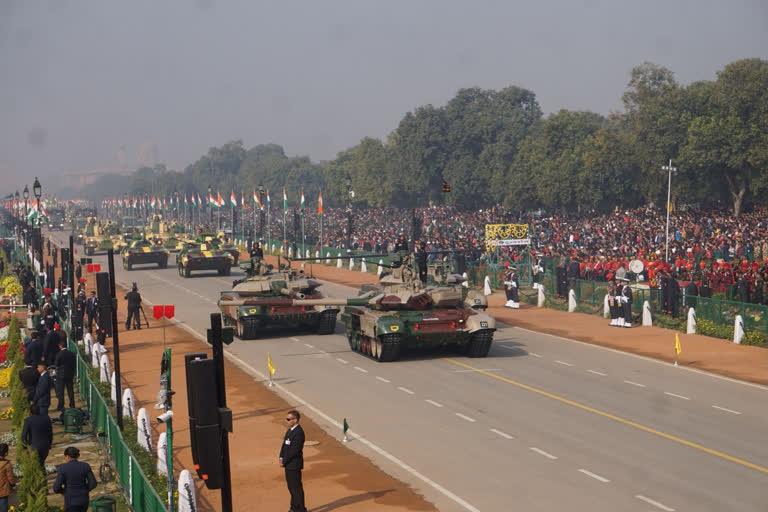New Delhi: A lumbering tank moving at less than 50 km an hour in a rarefied environment with extremely cold night temperatures may be an anomalous military idea up in the Himalayan highlands of eastern Ladakh. But not so in reality.
Eastern Ladakh comprises two kinds of topography—expanses of totally barren rocky wasteland and high altitude craggy mountains—the only common denominator being the biting cold which worsens with the ‘wind chill’ factor. And winters being only about more cold and heavy snow.
So besides the valleys amid the high mountains, huge swaths of the region are plateau-plains like in Chushul, or in Demchok which offer ideal terrain for tank warfare.
And that is why, among other weapon platforms, the Indian military’s about 150 tanks are well-positioned and ideally-deployed in the region that is increasingly becoming the flashpoint amid a tense face-off between India and China in a border that is seeing the opening of new fronts.
But packing 45-ton tanks in aircraft to land in a high-altitude handling tanks was easier said than done.
Read: India moves air defence missile systems into Ladakh sector
While a very small tank presence was there in Ladakh since 2014, the move to fly sizeable numbers of tanks to the Leh airport—at more than 11,000 feet—and from there to their place of deployment in east Ladakh started in earnest from the summer of 2015.
“Back in 2015-16, initially we flew in just one T-72 tank in a Globemaster C-17 and undertook just one sortie a day. Later on we started flying two tanks in a C-17 and undertook more than one IAF sortie a day. It went on for much more than a year. And with the T-90s being flown in now to the region, we are well prepared for any kind of tank warfare or any situation where tanks will come handy,” said a serving senior defence official who was actively involved with the earlier operation and also familiar with what is happening now.
With their explosive power ready, hundreds of tanks including T-72 and T-90 are deployed in much of the eastern Ladakh region now, standing ready to thwart Chinese designs to push territories. About 3,000 armoured personnel are stationed with these tank formations.
Read: China lets values be: No 'Kung Fu' for PLA border soldiers but MMA brawl techniques
India has a mix of T-72, T-90 and Arjun tanks. Relying for more than three decades on the Russian T-72 tanks, India’s mainstay is now the T-90 tank with the DRDO-made main battle tank (MBT) Arjun being the third foil in the country’s tank regiments.
Back then the sudden presence of tanks in the region had taken the Chinese by surprise.
Expressing annoyance, on July 21, 2016, the state-owned mouthpiece ‘Global Times’ had responded to reports of Indian tanks in east Ladakh. “Deploying of tanks near the Indo-China border may hit a nerve within the Chinese business community… it is puzzling that while deploying tanks near China's border, India still strives to woo Chinese investment.”
WATCH: 'Galvan's PP14 and finger 4 with China'
Reacting to the development, the then Chinese foreign ministry spokesperson Lu Kang had said in Beijing: “The two countries should abide by relevant agreements and consensus, work in concert to maintain peace and tranquility of the border area and create a favourable environment for improving bilateral mutual trust and bolstering the proper settlement of the boundary question.”
But four year later, there is a sense of desperation for Chinese business to stay on in India even as Beijing is bent on vitiating the neighbourly ties by crossing the Line of Actual Control (LAC) and occupying stretches of territory that belong to India while unleashing a brutal attack on Indian soldiers on June 15 in Galwan Valley near the LAC.



